Update 12/20/2024 – added information about the Lab Oz.1 and Oz.1i, Odyssey Square to Square, and Bettinardi Antidote putters
Low torque putters are becoming increasingly popular among golfers looking to stabilize their putting stroke. These putters minimize twisting and face manipulation throughout the swing, helping players keep the clubface square to the stroke path for better accuracy. In this article, we provide an overview of the leading low-torque putters currently on the market. Each model leverages innovative balancing technologies to meet the needs of golfers seeking consistent performance on the green.
1. L.A.B. Golf Putters: Lie Angle Balanced (L.A.B.) Technology
L.A.B. Golf specializes in lie-angle balanced putters, which remove torque by perfectly aligning the putter’s center of gravity with the shaft axis. This design minimizes twisting, no matter how the golfer’s stroke path behaves.
- Models: DF3, Directed Force 2.1, Mezz.1, Mezz.1 Max, and Link.1, and Oz.1 and Oz.1i
- Key Features: These putters stay square to the path, allowing natural strokes with minimal manipulation.
- Ideal For: Golfers looking for innovative designs focused on stability.
- Notable Users: Tour pros like Adam Scott have adopted these models for improved consistency
Click here for more details about the LAB putter models.
2. Odyssey Square 2 Square, Stroke Balanced (Backstryke), and Toe Up Putters
In late 2024, Odyssey released their Square 2 Square line of zero torque putters, including the groundbreaking Ai-ONE Square 2 Square series. Building on their earlier efforts to reduce torque with the Toe Up and Stroke Balanced (Backstryke) designs, these putters position weight strategically to minimize twisting throughout the stroke and promote a consistent square-to-square motion.
Notable Model: Odyssey Big Seven Toe Up
- Technology: Stroke Balanced to keep the face stable and on line with the golfer’s stroke.
- Ideal For: Players struggling with face rotation at impact.
New Models:
The Ai-ONE Square 2 Square series introduces advanced technology aimed at improving putting performance:
- Ai-ONE Square 2 Square Jailbird: A mallet with high MOI and Versa Alignment Technology for golfers needing forgiveness and setup accuracy.
- Ai-ONE Square 2 Square Double Wide: A wider blade offering the feel of a blade with the stability of a mallet, ideal for versatile players seeking a square stroke path.
- Ai-ONE Square 2 Square #7: An angular mallet with bold alignment lines, designed for players prioritizing forgiveness and easy setup.
Other Models: Odyssey #1 and #9 Toe Up models also belong in the torque-reduction category, catering to players who want enhanced face stability throughout the stroke.
3. PXG Allan Putter: Zero Torque Balance Technology
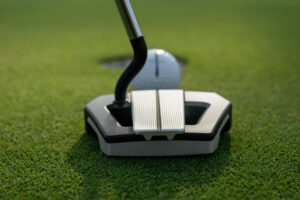
The PXG Allan Putter incorporates Zero Torque Balance Technology, positioning the shaft axis just above the center of gravity to eliminate torque and ensure the face remains square throughout the stroke.
- Design: A bold mallet shape featuring an S-hosel that promotes a toe-up balance for enhanced control and precision.
- Key Features: Exceptional stability, resistance to twisting, and consistent face alignment for improved putting performance.
- Ideal For: Golfers seeking a mallet-style putter with superior alignment, reduced face manipulation, and versatile performance across all stroke types.
4. Honu Putter: Mass-Balanced Design
The Honu putter stands out with its advanced mass-balancing technology, designed to eliminate torque and maintain consistent face alignment throughout the stroke. While less mainstream than some major brands, the Honu excels in delivering precise directional stability and unparalleled feel.
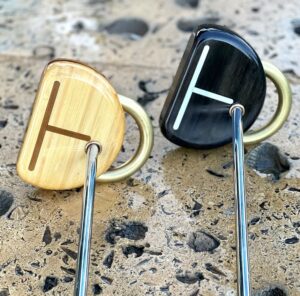
Key Technology: Precision mass-balancing minimizes twisting forces, ensuring the putter face stays square at impact and during motion. This innovative design also reduces off-axis vibrations for smoother, more consistent feedback.
Best Suited For: Golfers seeking a unique, performance-focused putter that offers superior control, exceptional balance, and consistent results on the green.
5. Evnroll ZERO Putter
Evnroll’s ZERO putter is another option for those seeking a low-torque putter. Its design focuses on maintaining a square face through the entire stroke, helping golfers avoid the need to correct for any twist.
- Technology: A blend of face-balance and toe-up principles to reduce torque.
- Ideal For: Golfers looking for a traditional feel with modern stability enhancements
6. Bettinardi Antidote SB1 and SB2: Zero Torque Excellence
The Bettinardi Antidote SB1 and SB2 putters redefine stability and control with their revolutionary Simply Balanced™ technology. Designed to eliminate torque, both models promote a naturally square stroke for unmatched consistency on the greens. Crafted with premium materials and cutting-edge design, they represent the pinnacle of putting innovation.
SB1 Blade Putter: The SB1 combines a sleek blade design with Bettinardi’s F.I.T. Face™ milling, delivering a soft and responsive feel. Its 6061 Aluminum pocket insert and Diamond Blast finish reduce glare and enhance focus, making it ideal for golfers seeking precision and feedback.
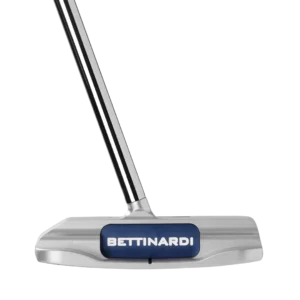
SB2 Mallet Putter: The SB2 features a high-MOI mallet shape with dual flange alignment lines for effortless setup. Its Diamond Blast 303 Stainless Steel face and anodized Sapphire Blue 6061 Aluminum body provide stability, forgiveness, and a striking aesthetic, catering to players who value alignment and a smooth stroke.
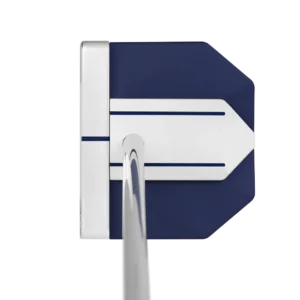
Both models pair Simply Balanced™ technology with premium components like a Chrome Tour Grade shaft and custom Lamkin grip, ensuring performance and style. Whether you prefer the refined control of the SB1 or the forgiving alignment of the SB2, Bettinardi’s Antidote series is a game-changer for golfers looking to master their putting stroke.
7. Axis1 Putters: Counterbalanced for Stability
Axis1 putters are known for placing the center of gravity directly in line with the shaft, minimizing torque and ensuring stability during the stroke. The unique design prevents the putter from twisting open at address.
- Key Models: Axis1 Rose and other tour-proven designs.
- Ideal For: Golfers who want stability without compromising on aesthetics
8. Scotty Cameron for Garrick Higgo
There were some photos floating around of a Scotty Cameron putter that people think looks like a zero torque prototype.
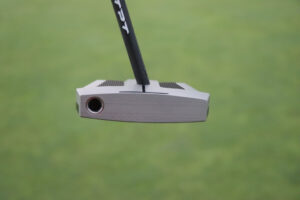
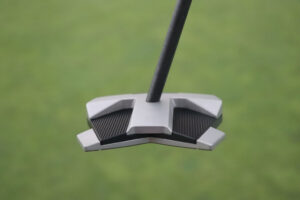
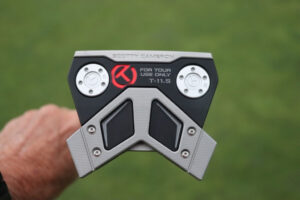
Why Choose a Low-Torque Putter?
Low-torque putters are designed to help golfers achieve a consistent putting stroke by eliminating unnecessary twisting and manipulation. These putters promote:
- Stability: A square face at impact ensures better alignment.
- Consistency: Less face rotation makes it easier to repeat the same stroke.
- Reduced Stress: Helps players focus on pace and line without worrying about stroke mechanics.
Conclusion: Find the Right Putter for Your Stroke
Whether you’re drawn to the modern aesthetics of L.A.B. Golf or prefer the familiarity of Odyssey’s designs, a low-torque putter can help you improve your consistency on the greens. Understanding the different balancing technologies—whether Zero Torque Balance, Lie Angle Balance, or Stroke Balance—can guide you to the perfect putter for your game.
With several options available from brands like PXG, Odyssey, Honu, and Evnroll, there’s never been a better time to explore torque-free designs and find a putter that works with your natural stroke.
FAQs About Low Torque Putters
Q: What is a low-torque putter?
A low-torque putter minimizes twisting, ensuring the face stays square to the path during the stroke.
Q: Who benefits from using a low-torque putter?
Golfers struggling with face rotation or manipulation during the stroke will benefit most from a low-torque putter.
Q: How does a lie-angle balanced putter work?
It aligns the shaft axis perfectly with the putter’s center of gravity, minimizing twisting during the stroke
Discover more from Ten to Scratch
Subscribe to get the latest posts sent to your email.